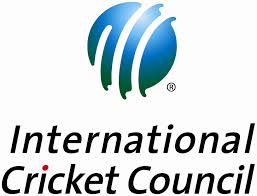In a move to give bowlers a bit of breathing room in 50-overs cricket, the ICC board has decided to do away with catching fielders in the first ten overs, get rid of the batting Powerplay, and allow five fielders outside the 30-yard circle in the last ten overs of an ODI innings. The other notable change that will take place from July 5 will see free hits awarded for all no balls in ODI and T20 internationals, not just when bowlers overstep.
These changes to the playing conditions were part of the recommendations made this May by the ICC’s cricket committee headed by the former India captain Anil Kumble. David Richardson, the ICC chief executive, said the modifications were made to make the “game simpler” for the fan and were approved by the ICC’s chief executive committee and further ratified by the ICC Board at the annual conference in Barbados this week.
“What we tried to do is make the game simpler for the fan and at the same time try and at least claw back a little bit of balance in favour of the bowlers especially in the last ten overs of the innings,” Richardson said during a media conference on Friday. “So to that end we have got rid of the requirement to have compulsory close catchers in the first ten overs.”
Explaining the move to remove the batting Powerplay, Richardson said bowlers were getting a “hiding to nothing” with batting teams going on a rampage during the last fifteen overs, taking advantage of the expansive gaps in the outfield. “We have got rid of the batting Powerplay where you were only allowed three fielders outside the circle. It was normally taken between the 36th and 40th overs. So you had those 15 overs where it was all hell broke loose and especially if a batsman was set on a good batting wicket we were on a hiding to nothing.”
From October 2012 the ICC altered the fielding restrictions to ensure that no more than four fielders could be outside the circle at any stage of an ODI; previously five was the maximum. Although the change was implemented for the first time in a World Cup hosted earlier this year by Australia and New Zealand, teams have strongly criticised the move.
Incidentally in March Richardson had told ESPNCricinfo that he supported the fielding restrictions as they made the cricket and team tactics more aggressive. “Personally I’d like to see that we stick to the current fielding restrictions because I genuinely believe that has lead to a much more attacking approach, from the captaincy, fielding and batting perspectives.”
Asked by veteran West Indies commentator Tony Cozier whether the ICC considered the big totals that teams were scoring regularly detrimental to ODI cricket, Richardson disagreed.
“Not necessarily, Tony,” he said. “There is a great appreciation for the attacking nature of the play. The level of skills that batsmen have developed over the years are largely due to T20 cricket and just an overall attacking approach to the ODI game is actually welcome. The indirect impact of that is the only way the fielding team can survive is [by being] more attacking themselves. So you see an effort to get wickets especially early on in the innings. So the overall attacking approach is certainly not something we want to get rid of.
“Whether it is 300 or 400, as I said, towards the end of an innings in particular if you have just four fielders out, there is always two places you just cannot defend. But by allowing five fielders there is only one place. So if you have two places which are undefendable, you have to change the field and then the batsman knows exactly where you are going to bowl. Because you can’t bowl anywhere else as you would be murdered. (So by) reducing undefended area to one it makes it a little bit easier for the bowler.”
(ESPN Sports Media Ltd.)


